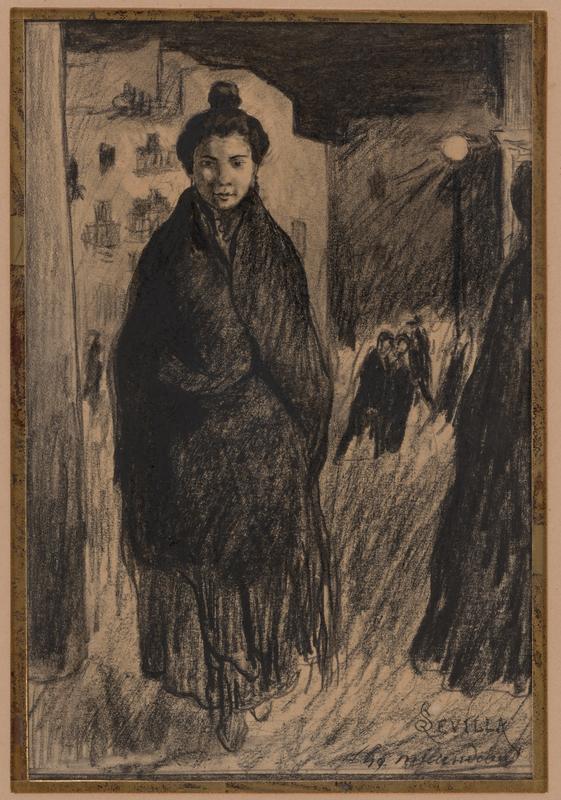
138. Charles Milcendeau, Street Scene in Seville
| Artist | Charles Milcendeau, French, Soullans, Vendée 1872–Soullans, Vendée 1919 |
| Title, Date | Street Scene in Seville (Scène de rue à Séville), c. 1901 |
| Medium | Charcoal and graphite |
| Dimensions | 6 5/16 × 4 5/16 in. (16 × 11 cm) |
| Inscriptions + Marks | Lower right: SEVILLE / Ch. Milcendeau |
| Provenance | [Ambroise Duchemin, Paris, until 2019; to Weisberg]; Yvonne and Gabriel Weisberg, Minneapolis |
| Exhibition History | "Milcendeau, le maître des regards," Historial de la Vendée, Les Lucs-sur-Boulogne, France, 2012; "Reflections on Reality: Drawings and Paintings from the Weisberg Collection," Mia, 2022–23 |
| References | Christophe Vital, ed., "Charles Milcendeau 1872–1919: Sa vie, son oeuvre" (Milan: Silvana Editoriale, 2012), pp. 192–93, 293, no. 99, ill. |
| Credit Line | Promised gift of Gabriel P. and Yvonne M.L. Weisberg, Minneapolis |
Charles Milcendeau is closely associated with his hometown of Soullans because ill health forced him to spend much of his later life there. But he was a wanderer at heart. In a 1910 letter to writer Auguste Barrau (1856–1941), Milcendeau discusses the trips he took to Brittany, Spain, Holland, and England. Of these, Spain was a revelation.1 He was introduced to the country in 1901 by the Spanish painter Francisco Iturrino (1864–1924) and returned there often until 1909, when the political climate became unsettled.
Milcendeau made a series of black-and-white drawings of people he encountered in the streets. He discovered the present subject in Seville. It is intriguing to ponder her circumstances—walking at night, alone, with a couple embracing behind her. Although the artist worked up some of these drawings with pastels, he left this image as a charcoal.
GPW
Notes
See Christophe Vital, “Charles Milcendeau et l’Espagne. L’Espagne révélée par Francisco Iturrino,” in Charles Milcendeau 1872–1919: Sa vie, son oeuvre, ed. Christophe Vital (Milan: Silvana Editoriale, 2012), p. 186. In a letter, Milcendeau writes that Spain “c’est une seconde patrie, la terre qui ressemble le plus à ma terre natale et à laquelle va toute ma reconnaissance.” ([Spain] is a second homeland, the land that most resembles my native land and to which I am grateful.) ↩︎